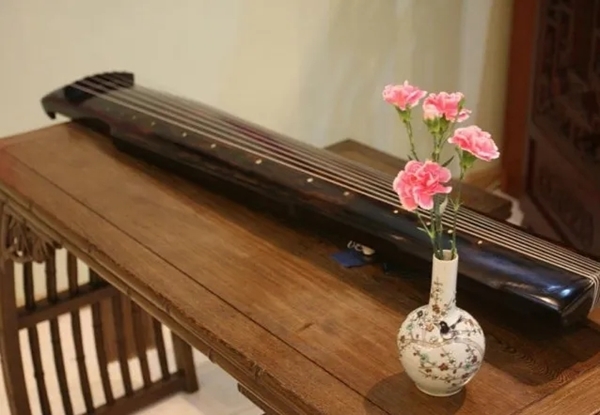Why does the guqin leave so many minus-character scores while other instruments don't?
Why does the guqin have such a strong vitality in national instrumental music? Why does the guqin have so many collections of qin books but not other musical instruments?

First of all, the vitality of Guqin is inseparable from its audience. In ancient times, the audience of guqin was mostly literati and doctors, and the literati advocated the "Three Lis" (conservation of merit, virtue, and speech), of which Liyan is a very important one. Therefore, there are many qin book score collections that have been handed down by literati writing books. The audience of other musical instruments are mostly folk artists. Due to the limitation of educational level, the inheritance of artists is mostly word of mouth. Even if the artist has the desire to summarize the score into a book, it is often impossible to achieve it in terms of economic strength. Therefore, there are not only very few scores left, but also not many works handed down.
It is precisely because the guqin has such a rich collection of qin books and other historical materials, it also ensures the systematic and pure inheritance of the guqin. Just as Li Yu (1611-1680) of the Qing Dynasty wrote in his "Xianqing Ou Ji": "The sound of silk and bamboo is headed by playing the qin. According to legend, the ancient music has changed but not yet, it is the only one. Seeds, the rest are the voices of the end times." That is the reason.
Secondly, the guqin has a self-contained set of notation methods. This notation method is called "minus-character notation", which has made great contributions to the inheritance of the guqin. Because he can adapt to different aesthetic needs in different historical periods, qin artists can create a second time according to their own aesthetic tastes. In addition, Guqin music is allowed to continue to develop and innovate, such as "Xiaoxiang Shuiyun", which was originally ten stanzas, and has developed into an 18th stanza. This also provides a broad development space for the qin piece to adapt to the times, so that the same piece of qin piece can be equally accepted by people in different historical periods. This notation method and the continuous development and innovation of qin music have also become a strong guarantee for the guqin to be passed down from generation to generation in the long history.
Again, the official family pays attention. Guqin has always been regarded as a kind of musical instrument that changes customs and is highly educational, and has been valued by officials. "Shun plays the five-stringed qin song, the poem of the south wind, and the world rules" is a good example. The Qianlong Emperor even compiled a part of the qin book score into the Siku Quanshu. Objectively speaking, this also strengthens the preservation of piano score books.
We should also pay attention to two other points. First, the guqin itself is not static. At the beginning of the week, the number of strings was increased from five strings to seven strings, which made the range of sounds wider. Before the Tang and Song dynasties, the right hand made complex sounds with more rhymes and fewer rhymes, and gradually evolved into more rhymes and fewer rhymes after the Ming Dynasty. These changes are all changes that have gradually occurred in the guqin itself in accordance with the aesthetic needs of different periods.
The second is that the guqin is a musical instrument that can fully reflect the rhythm of traditional Chinese music. Just as Chen Zhongru recorded in "Wei Shu·Lezhi" said: "If you are idle and accurate, you can distinguish the clear and turbid rhythm of the five tones; if you are good at qin skills, you will know the body of the five-tone tuning. Musical instruments are naturally compatible and do not compete with each other. If you don't practice this, you will be wrong." It can be said that the rhythm of the qin is the reference standard for the rhythm of other musical instruments. This is very crucial, we know that once something becomes a universal standard, then it has a strong vitality.
To sum up, from ancient times to the present, although the guqin has always been a small group musical instrument, it has always had a strong vitality unmatched by other musical instruments. As long as there is a collection of qin books, as long as we have a heart to study the guqin, then the guqin will accompany the development of the Chinese civilization history, and the branches will continue to flourish.
 渝公网安备 50010702504639号
渝公网安备 50010702504639号